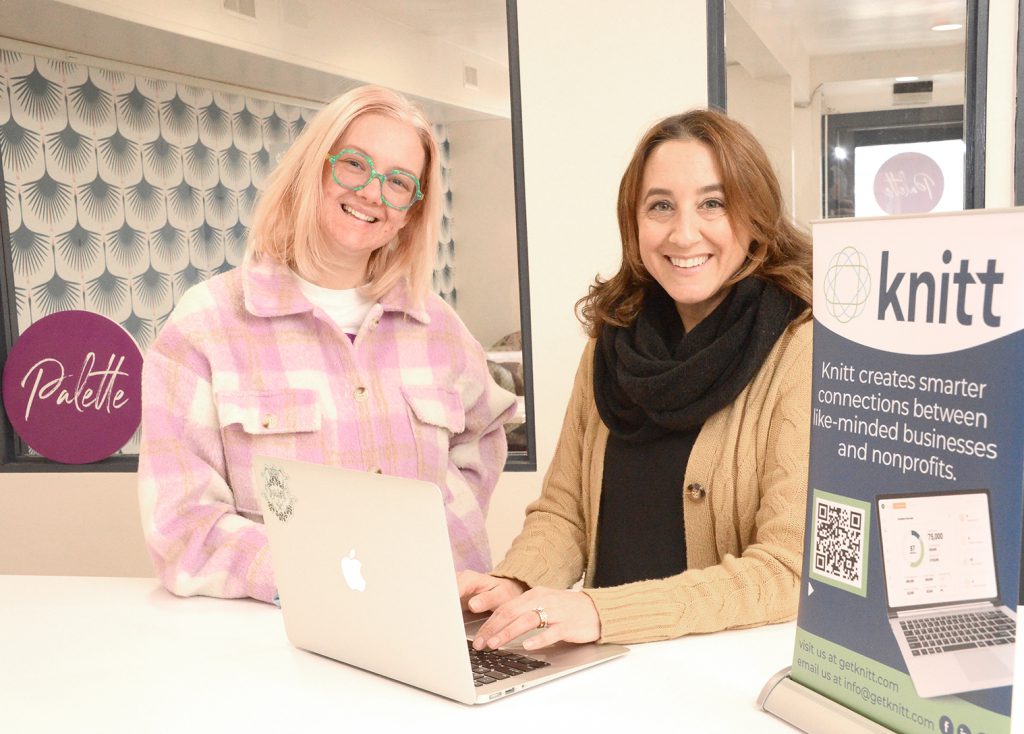
©2022 Saratoga Photographer.com
By Susan Elise Campbell
Knitt LLC, a subscription-based service that connects donor businesses with a specific mission and appropriate nonprofit organizations, formally hit the philanthropic world at the end of October.
The soft launch follows two years of development, three months of beta testing, and a short time building up the funds for founder Lisa Munter to kick off the service regionally.
The service helps plan, make and track charitable donations.
“While the platform is designed to be scaled worldwide, we in the Capital District, Saratoga and the Adirondacks are the first on this journey because this is the area where we live, work and play,” said Munter. “Knitt is a different way to handle philanthropy and it is going to take some time to grow it.”
Munter said “when you launch a service into the world there are a lot of questions about what the infant business is going to be.”
But feedback from the two dozen-plus companies and nonprofit organizations who were first to try out the Knitt platform enabled her staff and team of software developers to make refinements and introduce features that will add value for both sides of the client base, Munter said.
“Knitt should be a win for both,” she said. “The donor should receive just as much benefit as the charitable organization receiving the gift.”
What Munter calls “the match-dot-com portion” of Knitt “connects warm leads” between likely donors and likely nonprofits while filtering out unlikely partners. Once “knitted,” it is up to the charity to nurture the relationship and sustain giving, she said.
Munter’s concept for what she believes is a unique service came in part out of her own experience in philanthropy. A former special education teacher, she has served on boards of directors locally and understands the trials of raising awareness for and maintaining connections with charitable organizations in any economy.
On the business side, she experienced her husband’s company, Munter Enterprises, inundated with requests for donations year after year, and conceived Knitt to streamline the charitable giving for companies.
“You can put a charitable gift into your budget but if giving is only reactionary, the next thing you realize is it’s six months in and you’ve gone through your budget,” said Munter. “Now you have to either say ‘no’ or go over budget. But Knitt allows users to see in live time where they are in their giving goals while showing the types of organizations they are giving to.”
One of the features of the Knitt platform is that businesses can be sure that the groups they may be looking to partner with are bonafide nonprofit organizations. To be on the platform as a subscriber, all organizations are vetted.
Knitt is also a time-saving tool to identify organizations with specific causes that the owners of the donor business or their employees are passionate about.
For example, a company or its employees with a backstory that attaches them to children’s causes wants to “know at the end of the year when they’re looking through their Excel spreadsheet” that their gifts aligned closely with their intent, she said.
“Some donors think they are giving to children’s causes and then realize $50,000 went to food insecurity and only $5,000 to kids,” she said. “Is that what they wanted their giving to look like?”
Especially is uncertain economies, “donors are trying to be more purposeful and mindful in their giving,” Munter said. Knitt streamlines the process by helping donor businesses distill the hundreds of nonprofit organizations in the Capital Region down to “a curated list” of those with shared missions.
When first subscribing to Knitt, donors fill out a profile and check the main categories of organizations they want to support. Within those are sub-categories to select from, which Munter said is taken from IRS business categories.
“Do we have every single sub-category represented? We don’t,” she said. “But the good news is since we launched in October we had a couple nonprofits email me saying, ‘We would really like to see if you can add certain categories that we would fall under,’ enabling them to make more connections with appropriate donors.
After clicking on all the checkboxes and with the entities and subcategories selected, there is a foundation for starting to make matches.
“Now they have a Knitt profile page or a splash page with their logo, important bullet points, information that links to the website, social media links and more,” Munter said.
“If the donor is interested it can send, or accept, a Knitt request,” said Munter. “If a donor wants to do a deeper dive before accepting a Knitt request from a nonprofit, those details are right there on the organization’s profile page.”
“That’s the warm leads connection, no different than when we are at a function and someone introduces us,” she said. “Then if we want to continue that journey together we’ll set up another meeting. But you don’t have to go to a networking event and you don’t even have to be in the same zip code or spend hours in the hamster wheel of the unknown to make a connection.”
A new implemented feature is the instant donation receipt, another time-consuming task that Knitt alleviates, Munter said.
Munter said she wants to curate Knitt during the soft launch stage to better represent the people who are using it. She is especially working to build the donor side of the client base by letting “businesses that donate to multiple organizations know how Knitt gives them more insight and analytics and information than they would get from a spreadsheet.”
“There is a much bigger vision for Knitt, so keep joining us on our journey,” she said. “In time Knitt will remove the barriers of regional communities and users will be able to discover partners nationwide that fit their requirements for philanthropy.”
Visit getknitt.com for more information.
